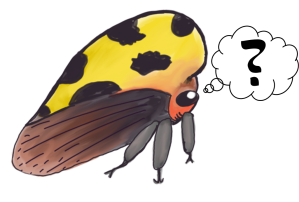Written by Nancy Miorelli
Just this week I had the unique opportunity to give a joint presentation with Jon Perry from Stated Clearly. Jon and I worked for several months together, in combination with a team of other scientists and communicators to create this video: What Is Chemical Evolution? sponsored by the Center of Chemical Evolution in Atlanta. Jon was flown out here to give several talks within the Atlanta area and invited me to present with him in Athens.
Jon first talked about a little of the history regarding Chemical Evolution and I followed up with a brief look into how chemicals are used in different insect and arthropod groups. I hope you enjoy it!
Chemical Warfare and Evolution
My talk ends at 22 minutes, the rest is questions. All credit and references are posted past the “more” tab. Thanks for watching, and I hope you enjoy! Make sure you have annotations turned on! (unless you’re on mobile in which case they’re automatically deactivated.)
What Is Chemical Evolution
Photo Credit:
There are a lot of photos that I used in this presentation! I’d especially like to thank Eric Stavale for my cover slide. Also, numerous photos from Thomas Shahan and Alex Wild who are some of my favorite insect photographers!
Special Thanks
to my friend Liz Studer who works with beetles in the Carabidae (ground beetle) family. Without her, getting through the complex literature of bombardier beetle phylogeny would have been nearly impossible. Thanks Liz! =)
References:
-
Arndt E, Moore W, Lee WL, and Oritz C. 2015. Mechanistic origins of bombardier beetle (Brachinini) explosion-induced defensive spray pulsation. Science 348(6234): 563-567. See their YouTube video.
-
Dossey AT, Walse SS, Rocca JR, and Edison AS. 2006. Single-insect NMR: A new tool to probe chemical biodiversity. American Chemical Society 1(8): 511-514.
-
Duffey SS, Blum MS, Fales HM, Evans SL, Roncadori RW, Tiemann DL, and Nakagwa Y. 1977. Benzoyl cyanide and mandelonitrile benzoate in the defensive secretions of millipedes. Journal of Chemical Ecology. 3(1): 101-113.
-
Eisner T, Aneshansley DJ, Eisner M, Attygalle AB, Aslop DW, and Meinwald J. 2000. Spray mechanism of the most primitive bombardier beetle (Metrius contractus). Journal of Experimental Biology 203: 1265-1275.
-
Eisner T, Aneshansley DJ, Yack J, Attygalle AB, and Eisner M. 2002. Spray mechanism of crepidogastrine bombardier beetles (Carabidae: Crepidogastrini). Chemoecology 11: 209-219.
-
Eisner T and Eisner M. 2005. Secret Weapons: Defense of Insects, Spiders, Scorpions, and Other Many-Legged Creatures. The Belknap Press of Harvard University Press Cambridge MA.
-
Market P, Papaj D, Yeager J, and Molina S. 2011. Bioluminescent aposematism in millipedes. Current Biology 21(18): R680–R681.
-
Moore W. 2006. Molecular phylogenetics, systematics, and natural history of the flanged bombardier beetles (Coleoptera: Adephaga: Carabidae: Paussinae). Thesis from the Department of Entomology from the University of Arizona.
-
Wild, A. 23 March, 2012. “A Buttload of Hydrogen Cyanide” from www.myrmecos.net. Accessed 27 July, 2015.
-
Zagrobelny, M, Bak S, Olsen CE, and Moller BL. 2007. Intimate roles for cyanogenic glucosides in the life cycle of Zygaena filipednulae (Lepidoptera, Zygaenidae). Insect Biochemistry and Molecular Biology: 37(11): 1189-119.



Pingback: Healthy Insect Relationships: How Insects Court Each Other | Ask an Entomologist